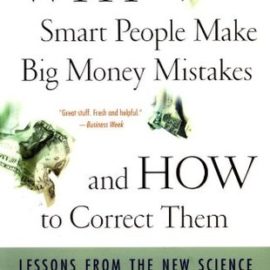Disclosure: I may earn affiliate revenue or commissions if you purchase products from links on my website. The prospect of compensation does not influence what I write about or how my posts are structured. The vast majority of articles on my website do not contain any affiliate links.
I recently hit one hundred followers on Goodreads. I’m not sure what it means.
Goodreads, with a user base purportedly in the tens of millions, is virtually unknown in the world of social media marketing. Performing a Google search for ‘Goodreads followers’ will return about five pages of relevant content with quality varying wildly. It seems that even independent authors, who stand to gain the most from building up their fanbases, haven’t come anywhere near reaching consensus on how they should be using the website.
In contrast, Facebook likes and Instagram followers are so well understood that there is a monetary value placed on them. I’ll focus on Instagram because I’m involved with a business there and understand the market intimately. There’s an established grey-market value for someone wishing to purchase (fake) followers, and there are emerging standardized rates for how much companies are willing to pay for each follower that an influencer has.
On Instagram, not only is a follower count a measure of your worth, but it’s also the most accurate gauge of your potential reach. It’s common for me to have a 20% engagement rate on Instagram, which is great, but that’s because all of my followers are real; most of them are good friends. To become an influencer on Instagram is the modern-day badge of celebrity and relevance. By my estimations, the grey market for Instagram followers including automation programs that generate followers, is in the multimillion dollar range. Yes–those suspiciously-coordinated likes and comments you get from random accounts after posting a new picture or liking someone else’s are nearly 100% automated. That’s a story I’ll tell another time.
Goodreads is markedly old-fashioned. Remember when people protested Facebook’s intelligent newsfeed that no longer displayed every single post in chronological order? Goodreads, aside from a few filters, still shows you every single update. Any update showcasing a single book review will take up the entire chrome window frame on a MacBook. One friend who reads a lot of comic books is enough to make a mess of your update feed.
Moving away from the general uselessness of the update feed, I’ve thought a lot about what typical user activity on the site is like. Let me tell you about mine. For my first two years, I logged on after reading a book, tried my best to decide on how many stars to rate a book, scrawled a review, and then logged out. Sometimes I would wander around and add books to my to-read list. For the last two years, I’ve taken more time to write reviews for each of the 100+ books I’ve read (and have been reading with obsessive consistency). In 2016, there were barely any interactions with my content, thus validating my original suspicion that the majority of users aren’t active or have what is perhaps the shortest average login activity time of any social network.
However, in mid 2017 some of my reviews began to accumulate likes and thus appeared on the main page for the corresponding books. For the last few months, there have been days where I have had more notifications from Goodreads than Snapchat. I went from roughly 8 to 103 followers quite quickly. From looking at my follower’s activity histories, about 50% of them came after shelving books that I had reviewed.
Of my followers, about a half dozen are consistently engaged with my activity. Of the rest, I’d estimate that 50% simply don’t use the site regularly at all while the remainder are somewhat active but rarely engage. If my purpose for using Goodreads was to build a following, I would be frustrated. These observations explain why no social media marketing services sell followers or likes–it’s nearly impossible to convert and unless you’re a prolific writer you’ll never get organic followers. Building a fake persona on Goodreads might take more effort than just becoming a habitual reader and reviewer. Perhaps resisting commercialization is what has allowed the site to retain its charm.
If I ever start writing professional-grade book reviews or try to go the Amazon affiliate route, I’ll start backlinking to my personal website in my reviews. I would love to know the clickthrough rate. Aside from that, there’s not a lot I can do. I suppose that if I were to write a book, I would have a few early customers, but it takes more than a few bookworms to launch a title to the New York Times Bestseller list. My grand ambitions notwithstanding, I’ve come to enjoy Goodreads and the people I’ve met there very much. For the near future, I’m going to continue writing reviews and immersing myself in this purpose-driven community that knows no equal.





Pingback: 1000 Followers on Goodreads | Tim O'Hearn()